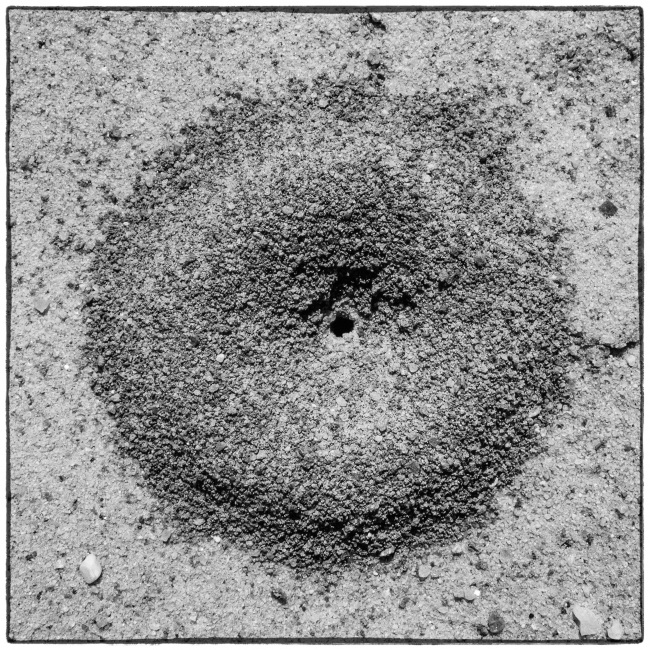I thought at first that these small volcano-like mounds were made by some kind of animal, maybe a worm. However, I’m beginning to think otherwise.
I came across this article on Exploring the Sand on the Coastal Care site. It describes something very similar to what I found (there are even photographs and illustrations, which look at lot like the picture above):
The movement of the tides up and down the beach every half day or so is a highly visible process carefully watched by fishers, beach buggy enthusiasts and joggers alike. While all these obvious changes are occurring on the beach, important but much less visible things are happening beneath the surface. As the tide goes out, air replaces water between the sand grains. As the tide comes up, water replaces air. The beach is a giant bellows, alternately taking in and expelling air. As the air passing through the sand, a great variety of features form within the sand as well as on the surface of the beach.
You can watch for yourself as air is forced out of the beach. The best time and place to see this is at mid to upper incoming tide levels on the upper beach near the high tide line. If conditions are right, streams of bubbles can be seen through the thin water film of the uppermost wave swash, especially as the swash begins its return to the sea.
…
When the tide has left the bubble area high and dry, a careful look (on hands and knees) will reveal that some of the nail holes resemble tiny volcanic cones. With a magnifying glass and imagination, we call these features volcanoes. The uppermost part of the hole flares out and is rimmed by a tiny circular mound of sand (Fig. 5.5). The flow of air through the holes was strong enough to remove some sand at the surface and pile it around the rim. Again, if you are watching the swash zone at the right time you can see the tiny eruptions from the holes that expel water and the sand that produces the rim.
Taken with a Sony RX-100 M3

